Rare Palm at Palmatum of River Kwai at River Kwai Resotel Riverside Resort in Saiyok, Kanchanaburi
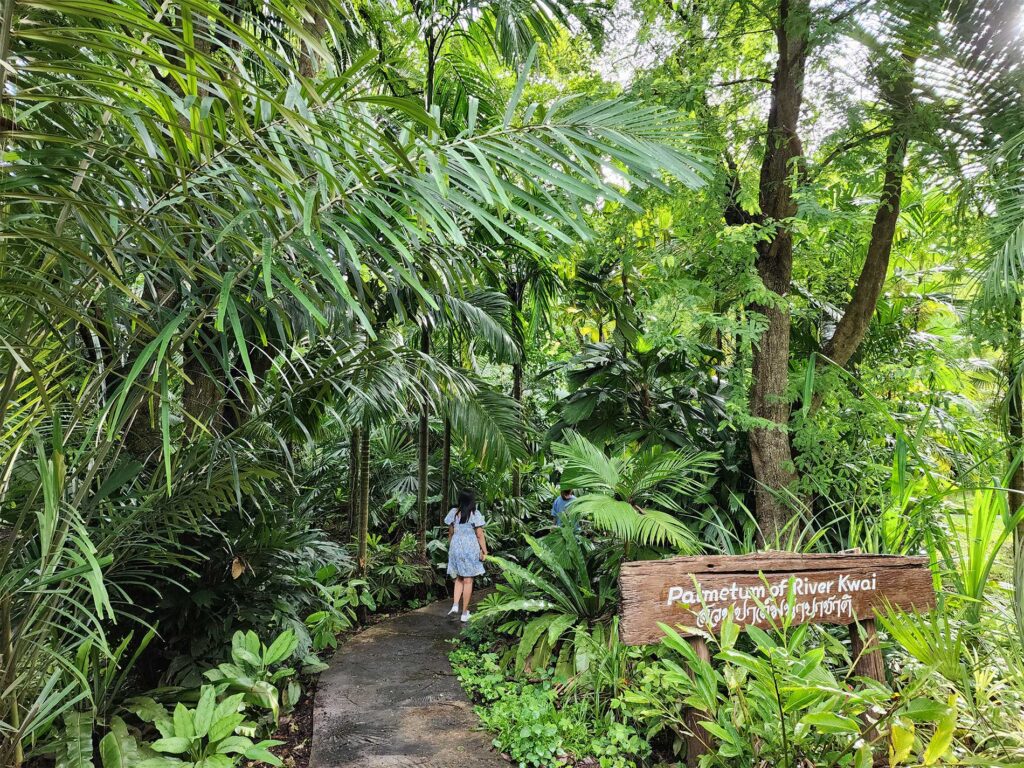
1. Tahina spectabilis
Scientific Name: Tahina spectabilis
Common Name: –
Characteristics:
Tahina spectabilis, often referred to as the “Queen of the Forest,” is a remarkable palm tree species native to a specific region in northwestern Madagascar. It holds the title of being the largest palm tree in the world and is renowned not only for its enormous size but also for its extreme rarity in the plant kingdom.
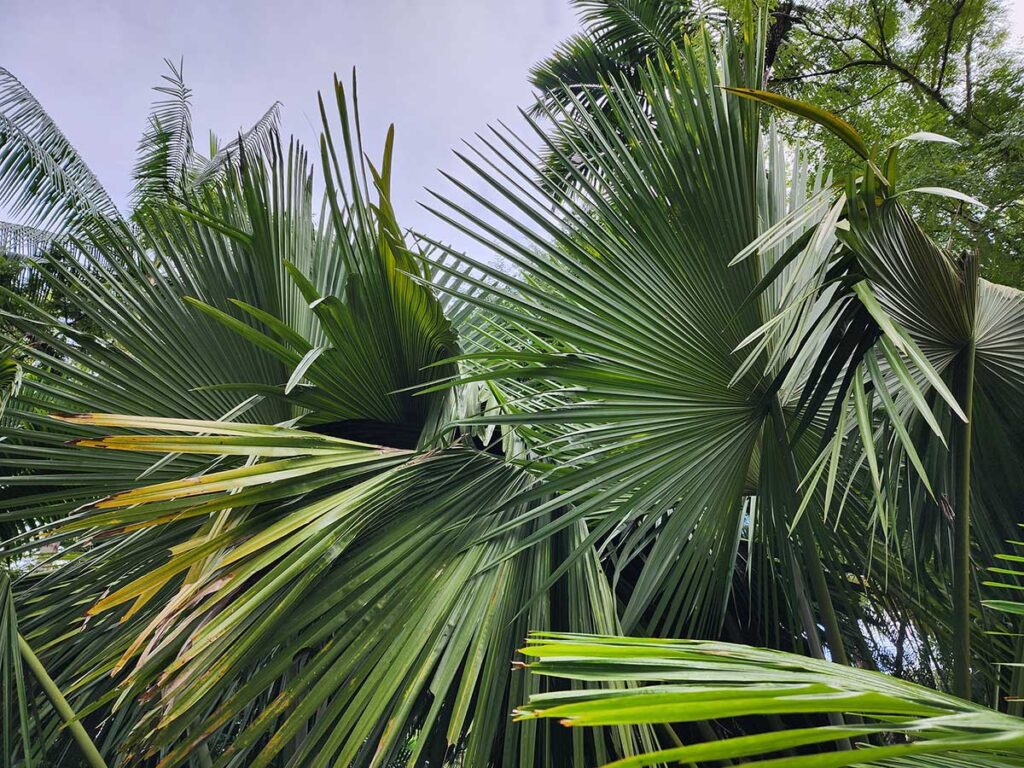
Found exclusively in the rugged and remote areas of Madagascar, this palm species has become a botanical wonder. The sheer size of Tahina spectabilis sets it apart from other palms. These majestic trees can grow up to an astonishing 18 meters (about 59 feet) in height. Their leaves are equally impressive, measuring up to 5 meters (approximately 16.5 feet) in length. The striking appearance of these towering palms against the backdrop of Madagascar’s unique landscape makes them a sight to behold.
One of the most astonishing aspects of Tahina spectabilis is its limited distribution in the wild. It is estimated that only a minuscule population of 90 to 100 individuals of this palm species remains in its natural habitat. This extreme rarity has raised concerns among conservationists and plant enthusiasts alike, as the survival of Tahina spectabilis is now at risk due to habitat destruction and other threats.
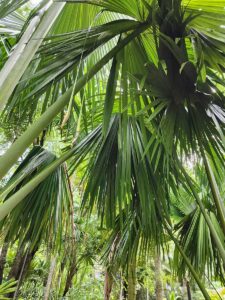
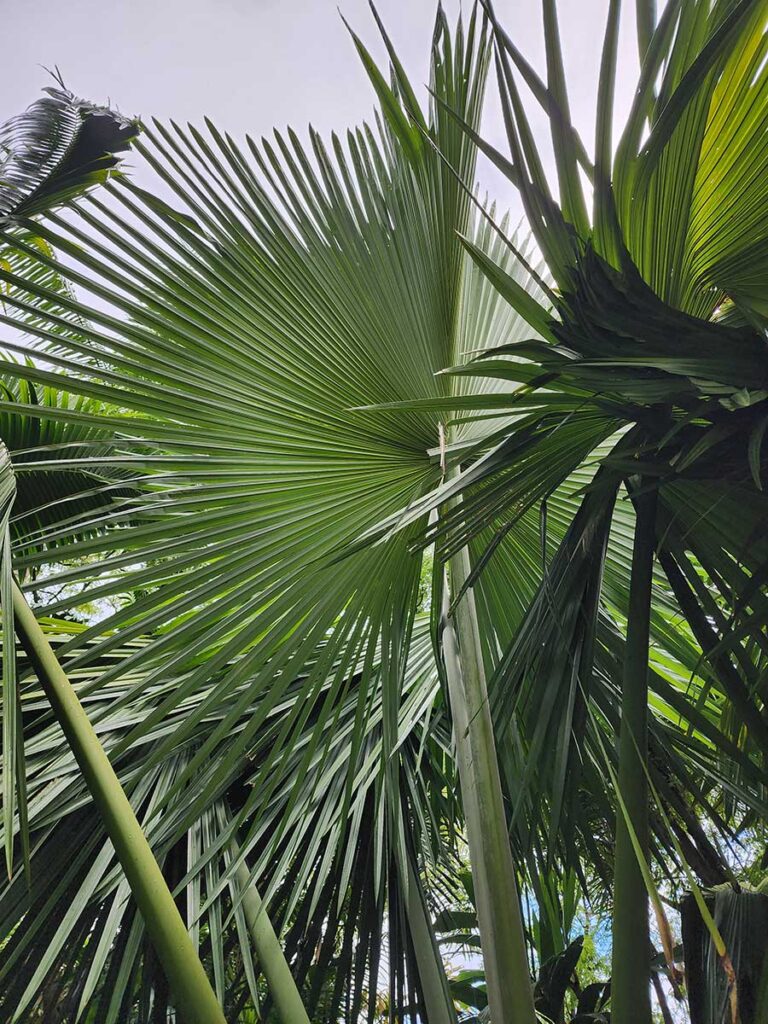
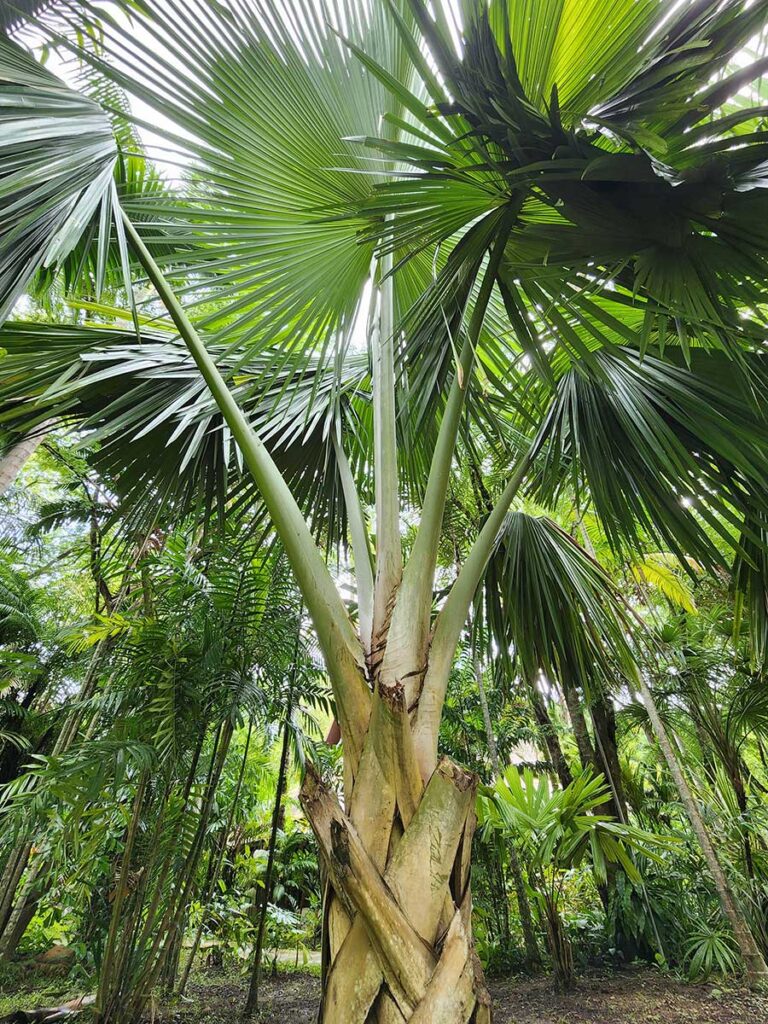
Efforts have been made to protect and conserve the remaining population of Tahina spectabilis, including the establishment of protected areas and initiatives to raise awareness about its endangered status. Researchers and conservationists continue to study this magnificent palm species, hoping to secure its future in the unique ecosystems of Madagascar.
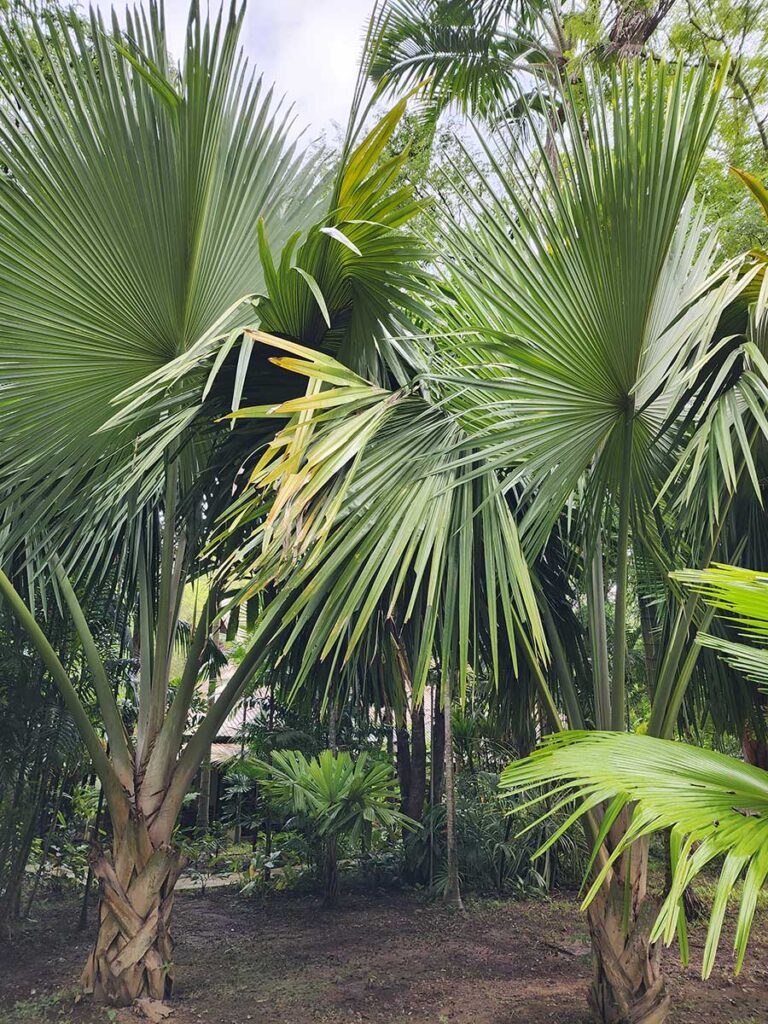
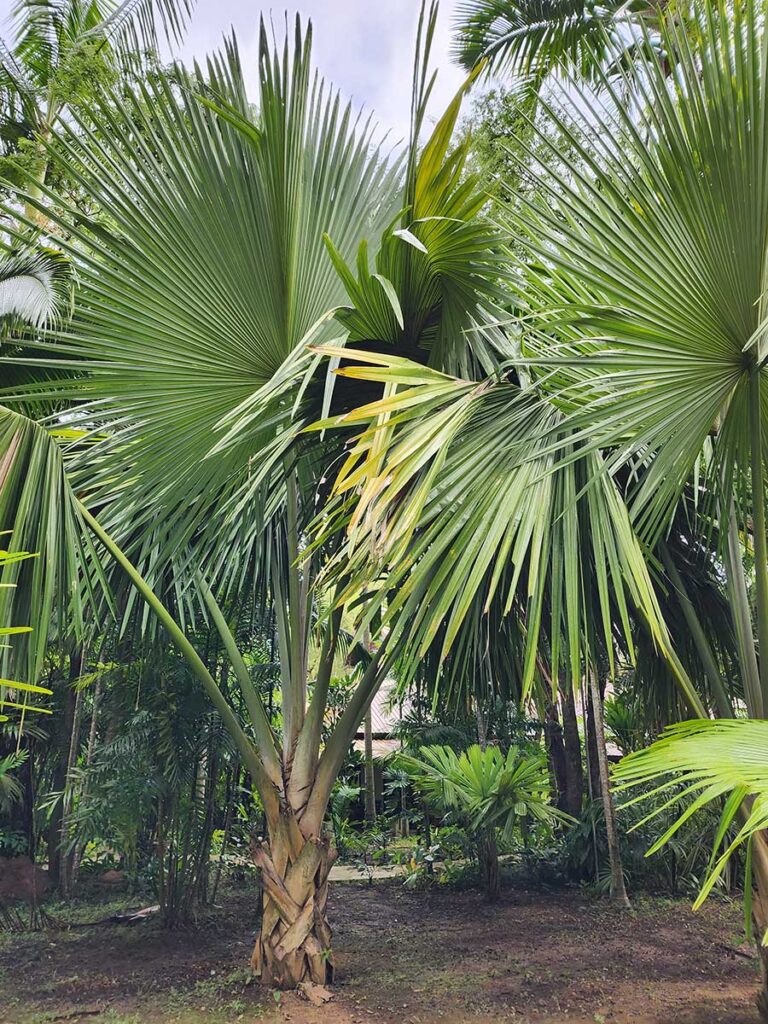
In summary, Tahina spectabilis is an awe-inspiring palm tree species, not only for its extraordinary size but also for its exceptional rarity, found only in a small region of Madagascar. Its towering stature and limited population make it a symbol of both natural beauty and the importance of conservation efforts to protect Earth’s unique and endangered flora.
2. Pelagodoxa Henryana (Henry Palm)
Scientific Name: Pelagodoxa henryana Becc.
Common Name: Henry Palm
Characteristics:
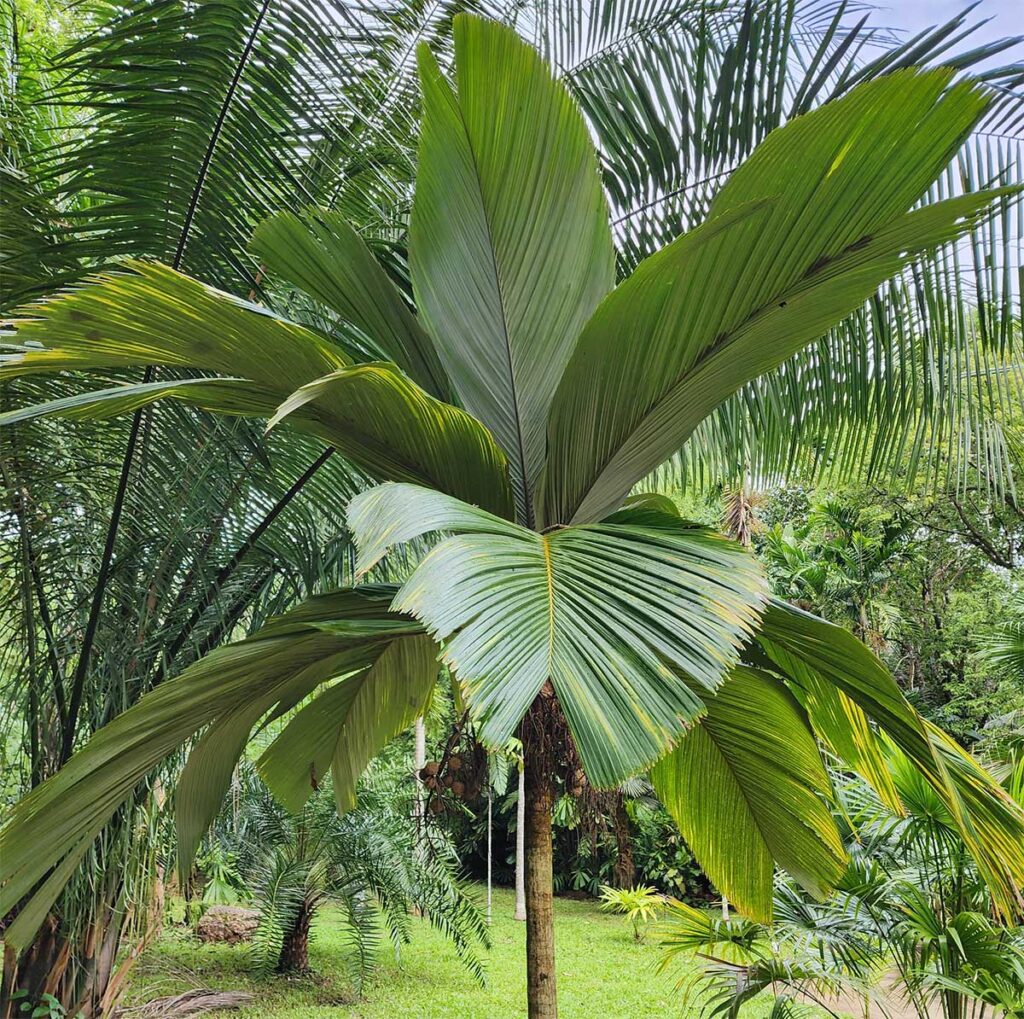
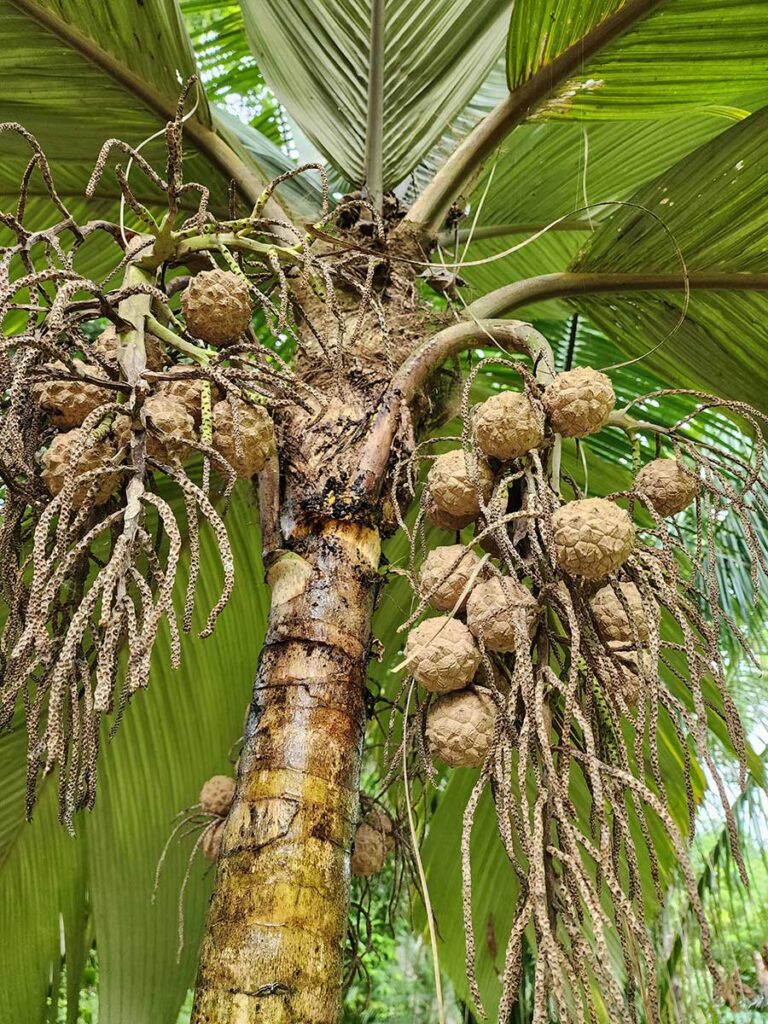
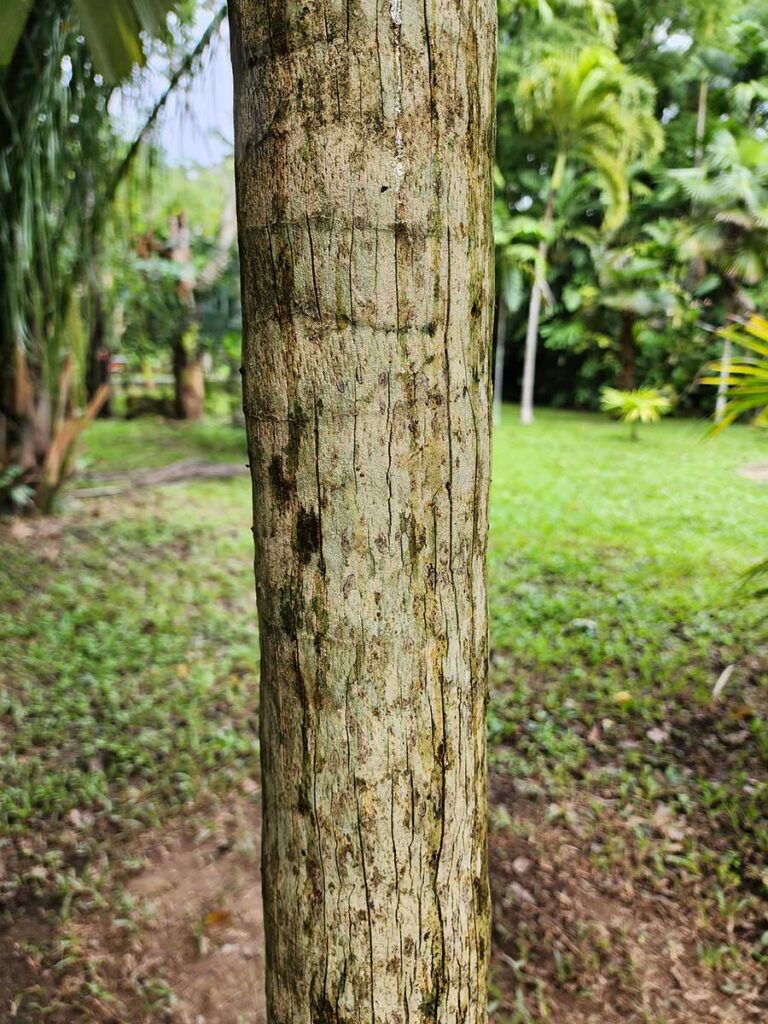
- Type: The Henry Palm is a solitary palm tree, meaning it grows as a single stem without clustering.
- Height: This palm tree can reach impressive heights, with some individuals towering up to 8 meters (about 26 feet). However, it is worth noting that the most aesthetically pleasing height for this palm tree is typically in the range of 1 to 3 meters (approximately 3 to 10 feet). At these heights, the palm exhibits a more graceful and visually appealing appearance.
- Trunk: The central diameter of the trunk typically measures around 15 centimeters (about 6 inches).
- Leaves: The Henry Palm features single leaves with stiff leaflets. These leaves are sizable, with a width of about 1 meter (approximately 3 feet) and a length of up to 2 meters (around 6.5 feet). The leaf tips are bifid, and the undersides of the leaves have a white coloration. The leaf stalk, or petiole, can extend to 50 centimeters (about 20 inches) in length.
- Inflorescence: The palm produces perfect flowers that emerge among the leaf sheaths. The inflorescence, where the flowers are clustered, can reach a length of up to 50 centimeters (approximately 20 inches).
- Fruit: The fruit of the Henry Palm is an aggregate fruit that can grow to a size of up to 6 centimeters (around 2.5 inches). When the fruit ripens, it develops a tough, scaly exterior that resembles cracked wood. These mature fruits take on a brown coloration.
- Soil: The palm thrives in rich and fertile soil.
- Sunlight: It prefers partial shade, indicating that it grows best when it receives dappled sunlight rather than full, direct sun.
- Propagation: To propagate the Henry Palm, seeds are used. However, it’s essential to note that germination from seeds can be a lengthy process, taking anywhere from 6 to 8 months for the seeds to sprout.
- Usage and Other Information: When cultivating the Henry Palm, it is advisable to plant it in areas where strong winds are not prevalent. This precaution helps prevent the leaves from breaking, ensuring the palm’s aesthetic appeal remains intact.
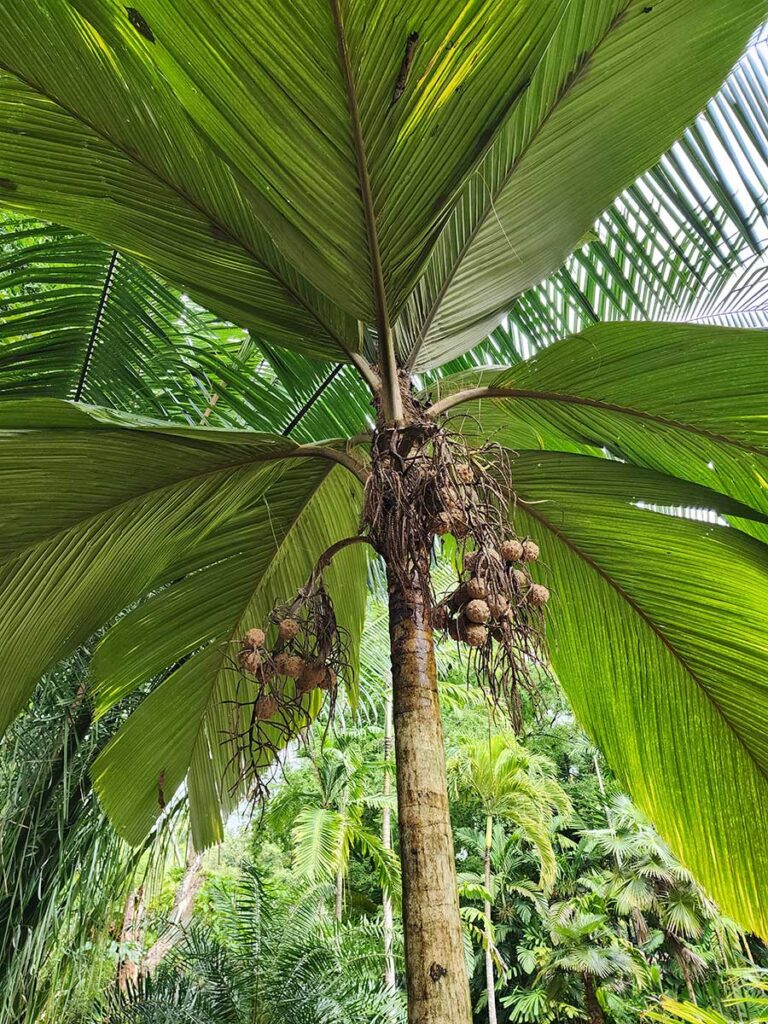
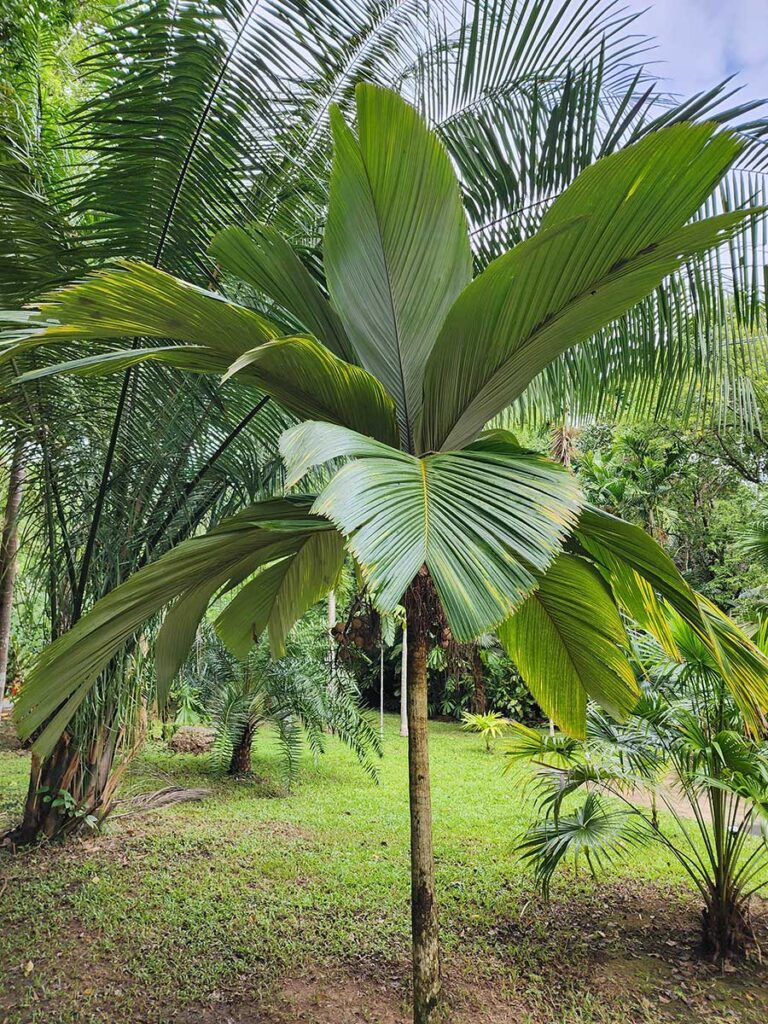
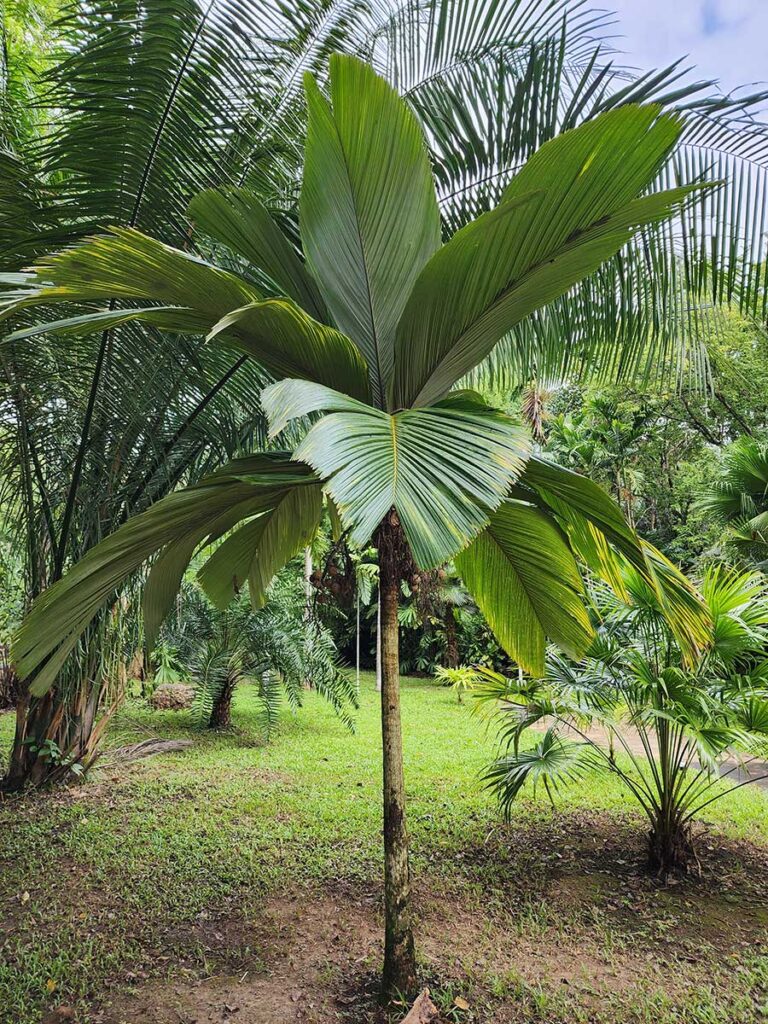
In summary, the Henry Palm, scientifically known as Pelagodoxa henryana, is a striking and unique palm tree species known for its impressive height and attractive foliage. It is a solitary palm that prefers partial shade, rich soil, and protection from strong winds. While it may reach heights of up to 8 meters, it is often most admired when it stands between 1 to 3 meters tall, displaying its elegant beauty. Propagation is done through seeds, but patience is required due to the lengthy germination process.
3. Pholidocarpus macrocarpus
Pholidocarpus macrocarpus, commonly known as “กะเปา” in Thai, with
additional information about its habitat, distribution, and physical characteristics:
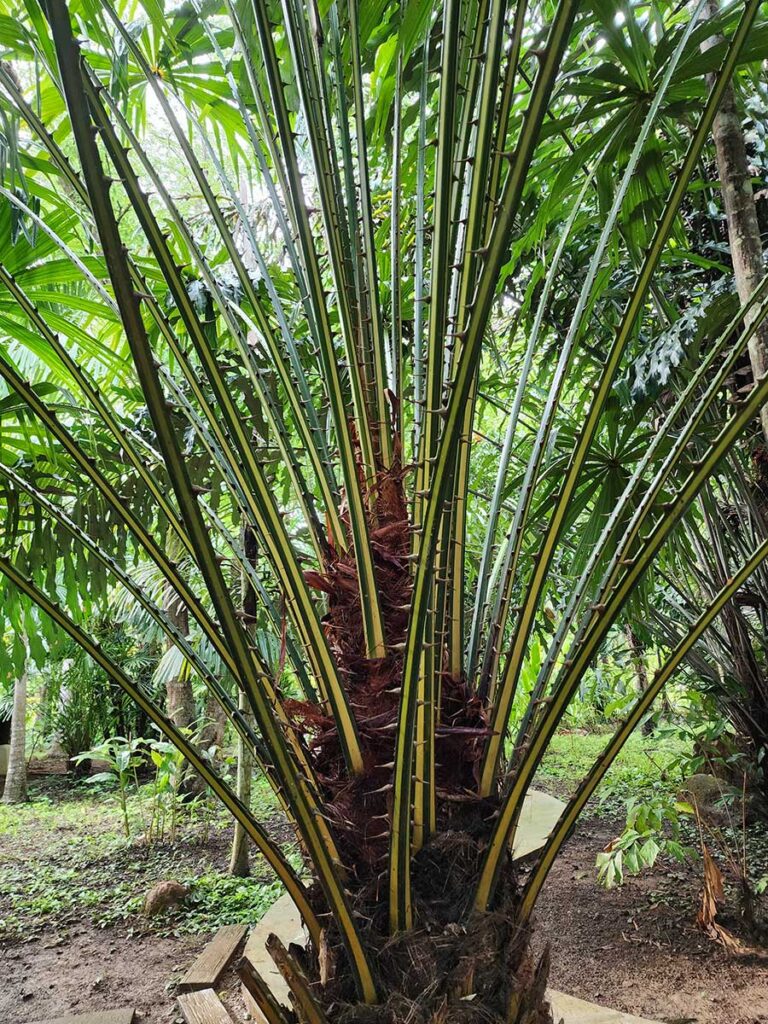
- Size: Pholidocarpus macrocarpus is a striking palm tree that can grow to impressive heights, reaching between 30 to 40 meters (approximately 98 to 131 feet). The palm typically forms a single tall trunk.
- Leaves: Its leaves are palmate, resembling a large fan, and can reach a diameter of approximately 2 meters (around 6.5 feet). Leaf segmentation starts either at the center of the leaf or about one-third of the way to the leaf stalk. The petiole, which connects the leaf to the trunk, measures 2.5-3 meters in length and is armed with sharp thorns.
- Inflorescence: The inflorescence, or spadix, emerges at the axil of the petiole.
- Fruit: Pholidocarpus macrocarpus produces oval-shaped fruits that are 8-10 cm in diameter. These fruits have a corky texture with a knurled or warty surface and a flesh coloration that is orange when ripe.
This palm tree forms a crown composed of 40 to 50 leaves. The leaf sheaths dissolve into a fibrous mesh, displaying a reddish-brown coloration, with an apical extension of up to 40 cm in the form of a ligule. The petiole, dark green and glossy on the outer side, features two longitudinal stripes on the inner side and is armed with straight spines that range from 4 to 7 cm in length, with the longest spines near the base and shorter ones towards the upper end.
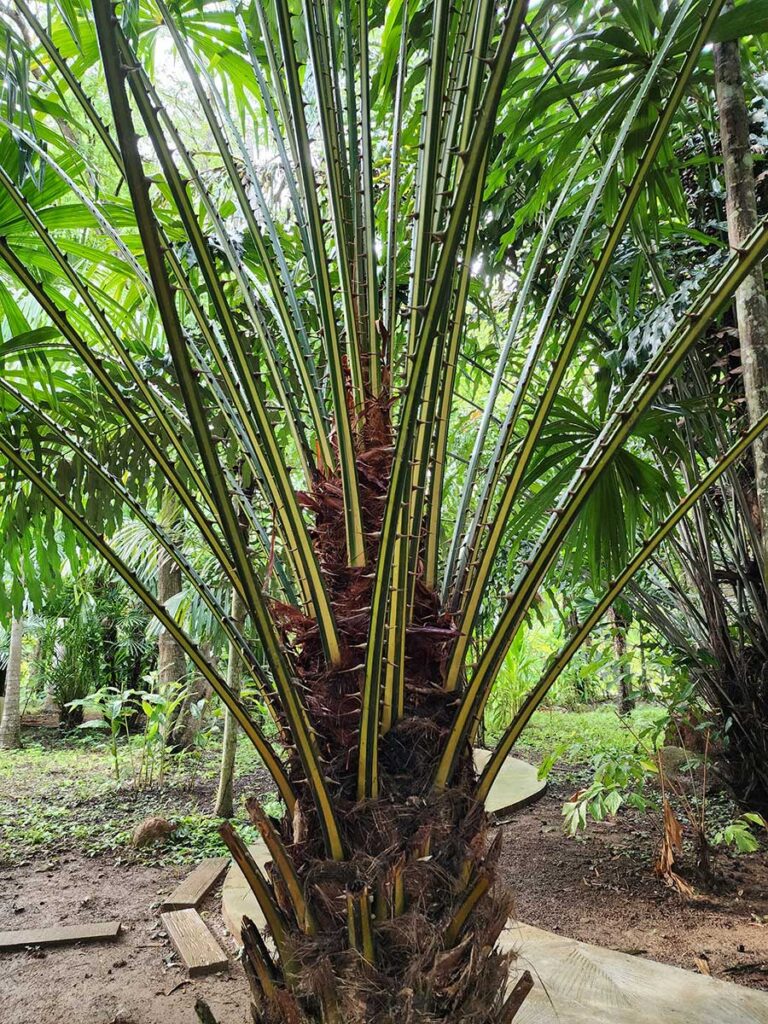
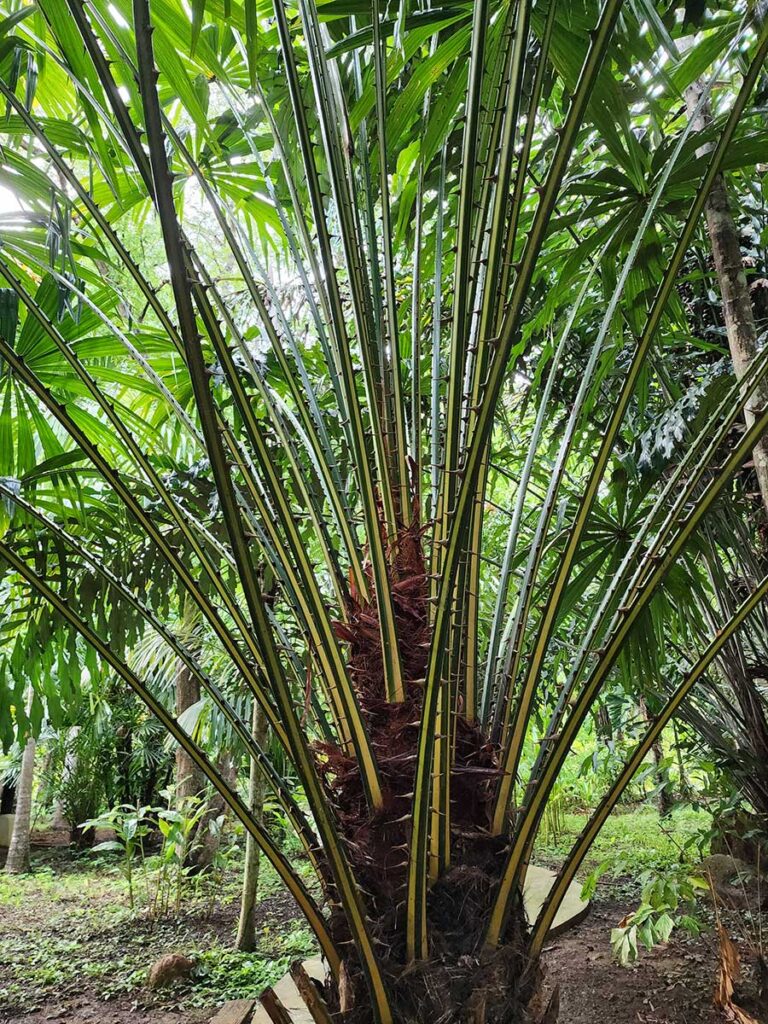
The leaf blades initially appear tidy but may become untidy with age. They can grow to an impressive 2 meters in diameter and are divided into 12 to 14 groups of segments. Each segment group is further divided into single-folded segments, with their tips varying from stiff to eventually drooping.
In terms of its reproductive structure, Pholidocarpus macrocarpus has an inflorescence with a peduncle and rachis of approximately equal length, measuring 0.8 to 1 meter. It features five to seven first-order branches, with numerous rachillae, each ranging from 15 to 25 cm in length.
The fruit of this palm species is distinctive, measuring 10-12 cm in diameter, with a corky and warty surface, and it turns brown when mature.
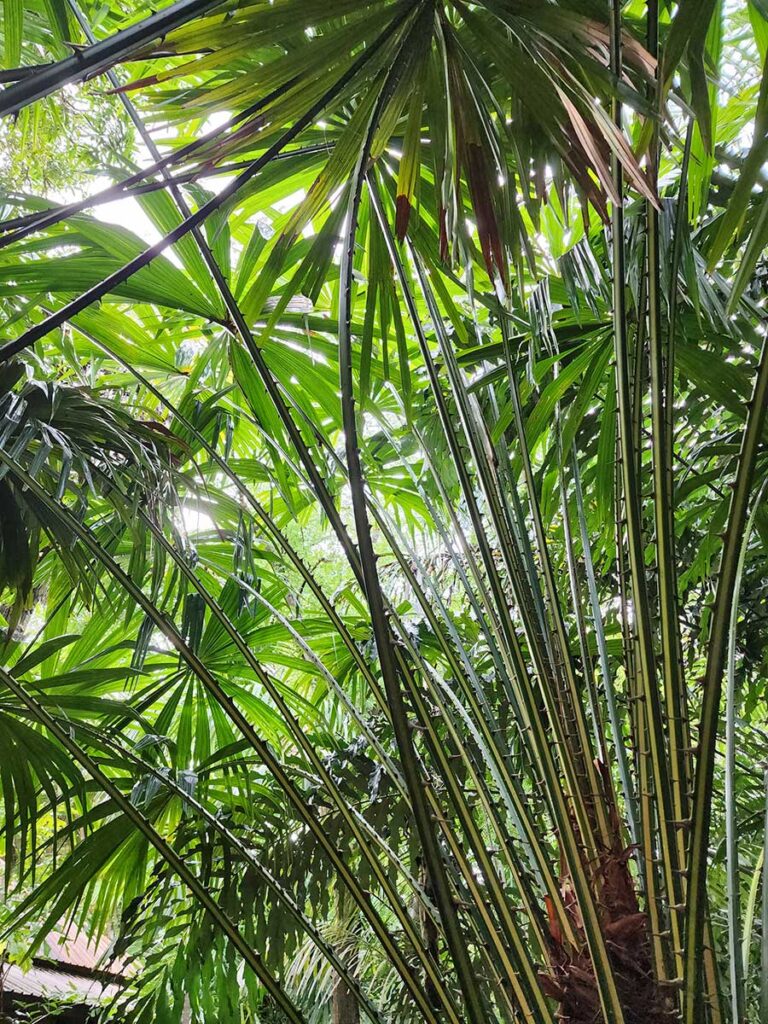
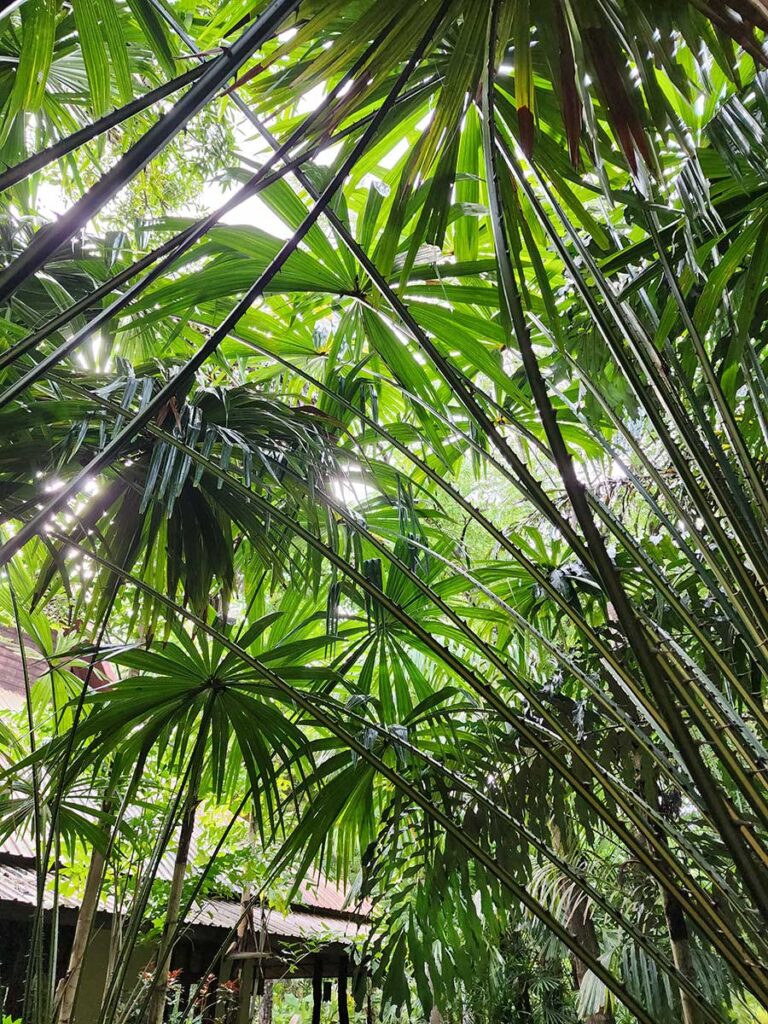
In summary, Pholidocarpus macrocarpus, or “กะเปา,” is a magnificent palm tree that can reach towering heights. It is native to the swampy peat forests of Peninsular Malaysia and Peninsular Thailand. This palm is characterized by its large, segmented leaves, long petioles with thorns, and unique, corky-textured, orange-colored fruits. Its grandeur makes it a noteworthy and valuable part of these tropical lowland ecosystems.
4. Wallichia disticha T. Anderson
Plant Name: The plant known as “ปาล์มนเรศวร” in Thai, with its scientific name as Wallichia disticha T. Anderson, belongs to the palm family (PALMAE).
Characteristics:
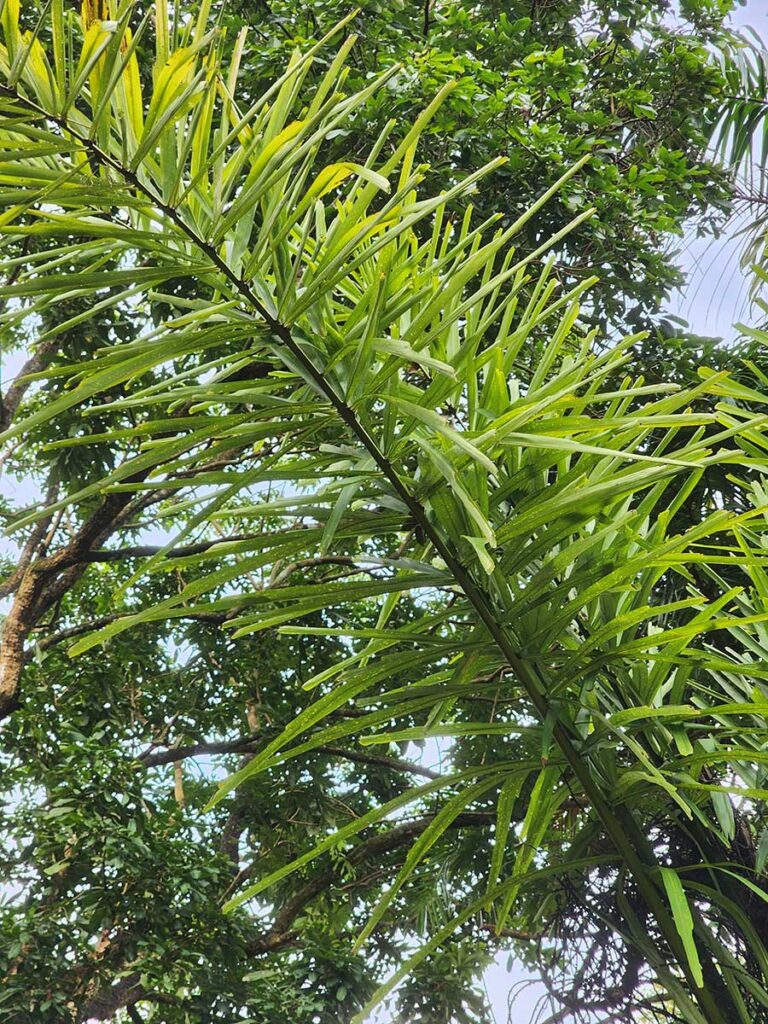
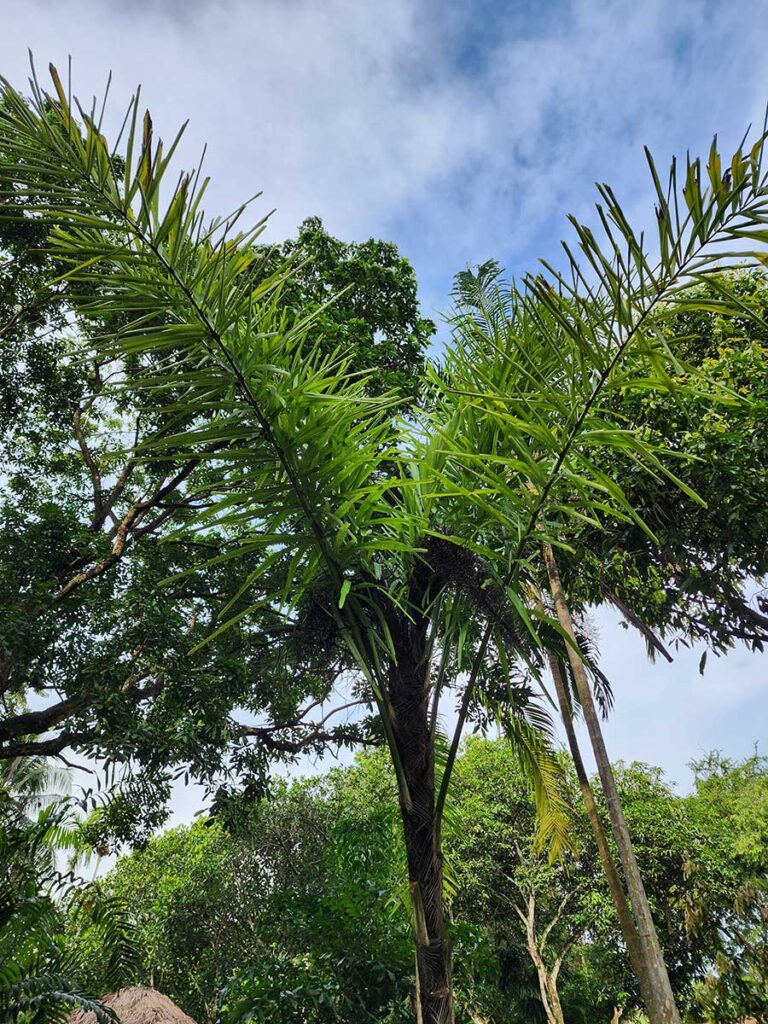
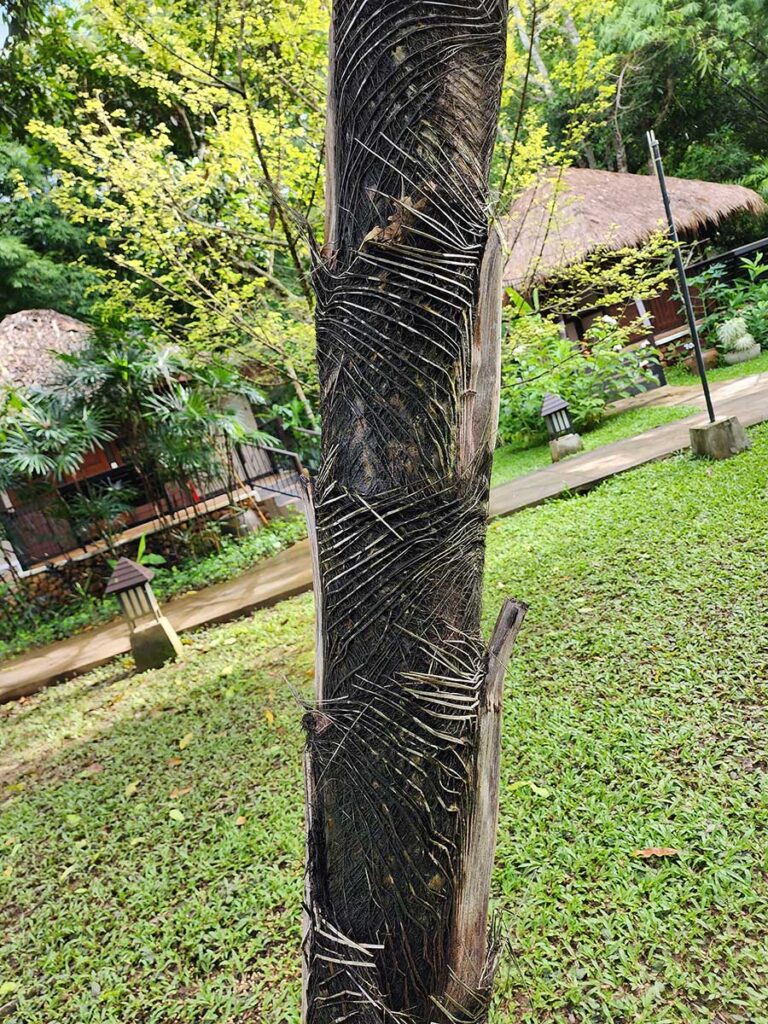
- Growth Type: Wallichia disticha is a solitary palm tree, meaning it grows as a single trunk without branching. It can reach a height of 5-8 meters (approximately 16-26 feet).
- Trunk Diameter: The central diameter of its trunk typically measures between 20-30 centimeters (about 8-12 inches).
- Flowering: What makes this palm particularly unique is that it flowers only once in its lifetime, after which it dies. This is a distinctive characteristic not found in most palm species in Thailand.
- Leaf Structure: The leaves of Wallichia disticha have an interesting appearance. They are arranged alternately on two opposite sides of the trunk, resembling the shape of a hand fan. The tips of the leaflets are toothed, akin to the edges of an animal’s bite.
- Inflorescence: This palm produces male and female flowers on the same inflorescence, which emerges at the tip of the trunk. The inflorescence is quite remarkable, with densely packed branches, and it can be as long as 1.5-2 meters.
- Fruits: The fruit of Wallichia disticha is small, measuring around 8-10 cm in diameter. It has a corky, warty surface and turns brown when it ripens, with orange-colored flesh.
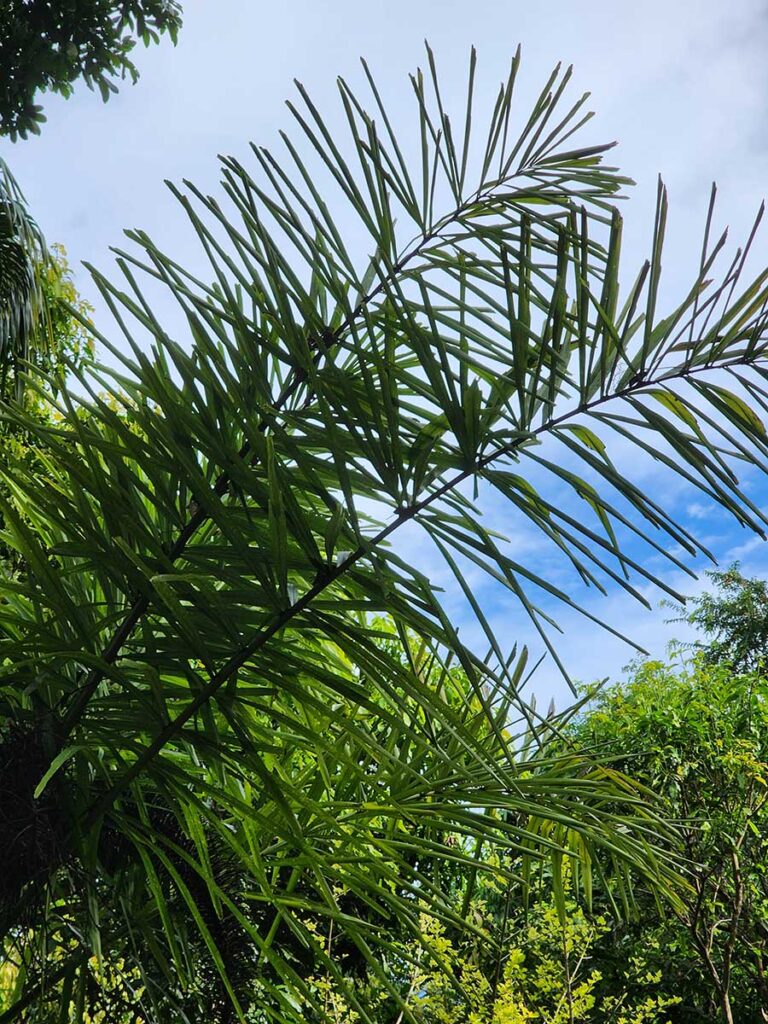
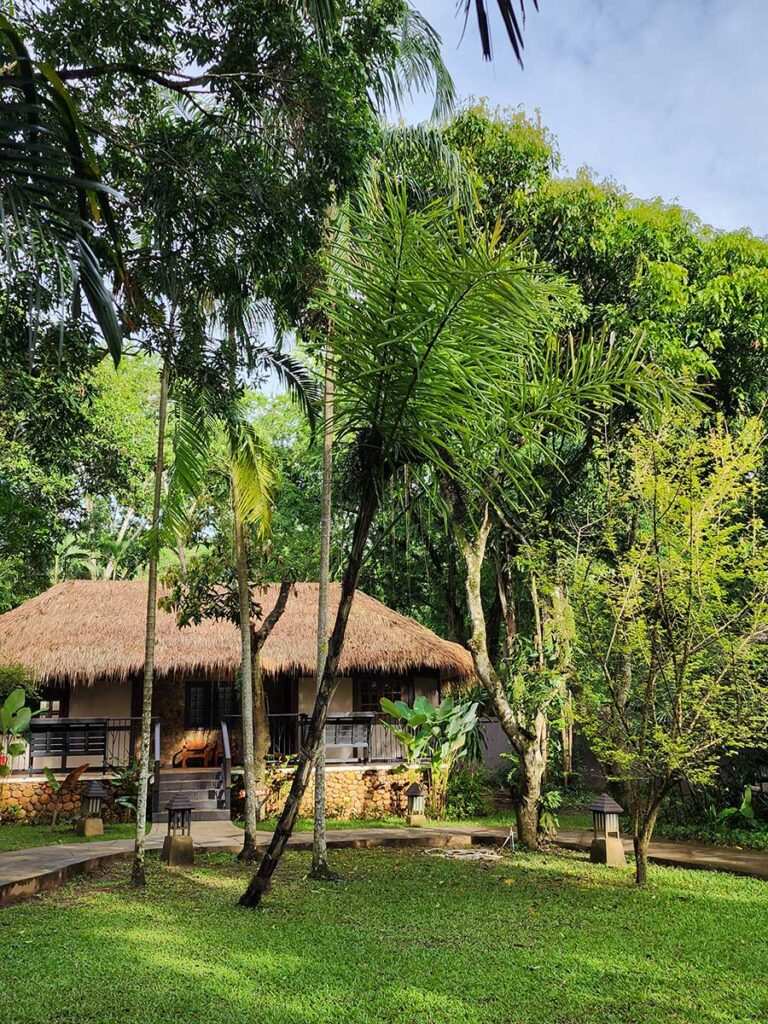
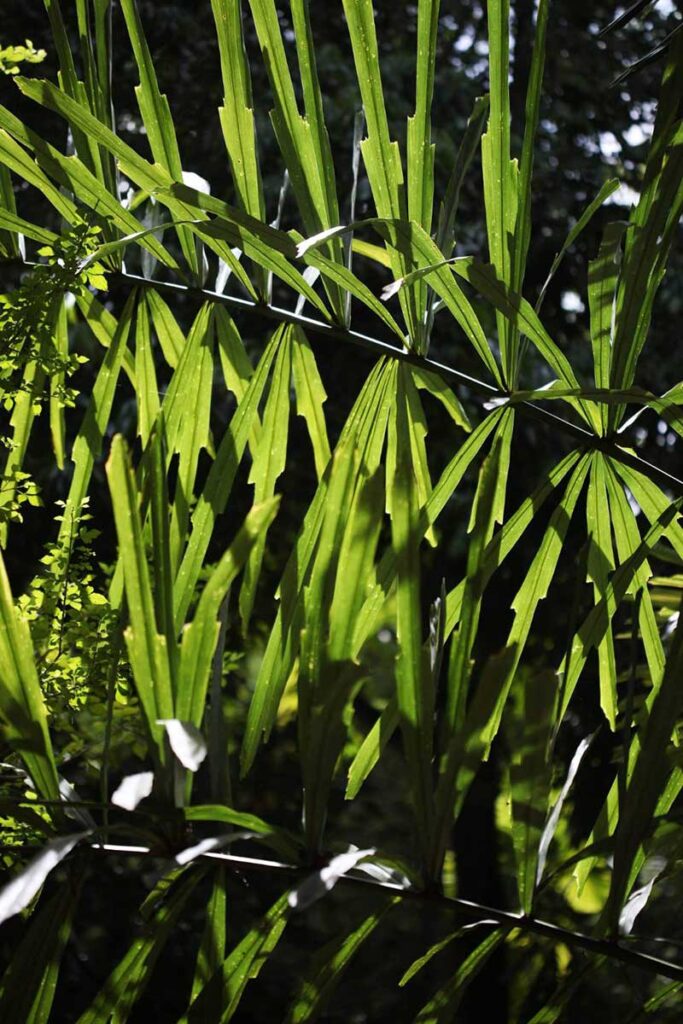
Habitat and Origin:
This palm species is primarily found in Thailand, specifically within the protected wildlife sanctuary of Tung Yai Naresuan Wildlife Sanctuary in Kanchanaburi Province. It grows in limestone hill forests at elevations ranging from 500 to 800 meters above sea level. Outside Thailand, it is also found in Myanmar.
Conservation Status:
Wallichia disticha is considered a rare and endangered plant due to habitat destruction caused by human activities. Preservation efforts and environmental conservation are crucial to ensure the survival of this species in its natural habitat for future generations.
5. Talang Queen Palm / White Elephant Palm
The remarkable Talang Queen Palm, scientifically known as Kerriodosa elegans Dransfield:
Discovery and Uniqueness:
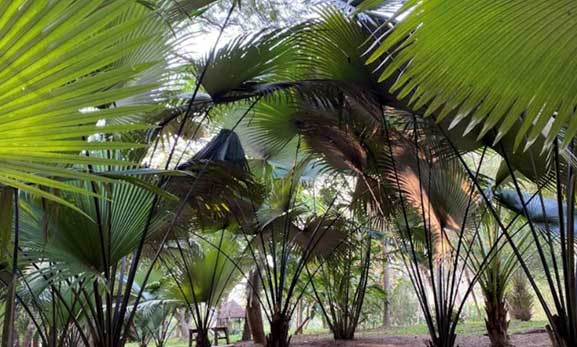
The Talang Queen Palm is truly a botanical marvel, as it holds the distinction of being the sole representative of its genus and species globally. Its origins can be traced back to Phuket Province, Thailand, where it was initially discovered in 1929 AD (Buddhist Era 2472). However, it wasn’t until 1983 AD (Buddhist Era 2526) that it was officially classified and given the scientific name Kerriodosa elegans Dransfield. The genus name, Kerriodosa, pays homage to Dr. A.F.G. Kerr, a renowned botanist who made significant contributions to the study of Thailand’s plant diversity.
Endemic Rarity:
This palm species is exceptionally rare and unique as it is found exclusively within the borders of Thailand. Unlike many other plant species with close relatives in various parts of the world, the Talang Queen Palm has no known botanical relatives outside of Thailand. Its exclusivity to Thailand makes it a national and global treasure in the realm of botany.
Botanical Characteristics:
- Solitary Trunk: The Talang Queen Palm typically grows as a solitary trunk without any offshoots. Its height typically ranges from 3 to 4 meters, giving it a compact and elegant appearance.
- Distinctive Leaf Stalk: One of its most distinctive features is its leaf stalk, which is round, glossy, and black in color. These leaf stalks can grow to be quite long, ranging from 2 to 3 meters.
- Circular Leaves: The leaves of this palm are strikingly circular, with a center diameter that can measure between 1.5 to 2 meters. They are adorned with finely serrated leaflets that create an intricate and beautiful pattern along the leaf edges.
- Leaf Coloration: The upper side of the leaves is characterized by a delicate shade of green, while the lower side gleams with a silvery sheen, adding to its aesthetic appeal.
- Fruit Clusters: The Talang Queen Palm produces small clusters of fruit near the base of its leaf stalks. These clusters are approximately the size of lychee fruits and are a bright yellow color.
Dioecious Nature:
One of its unique biological aspects is its dioecious nature. This means that individual trees are either male or female, and their flowers do not bloom simultaneously. This reproductive strategy enhances cross-pollination and genetic diversity among the population.
Local and Common Names:
Locally, this palm is known by several names in different dialects, including “ปาล์มเจ้าเมืองถลาง” (Talang Queen Palm), “ปาล์มหลังขาว” (White Leg Palm), “ทังหลังขาว” (Tung Leg Palm), and “ชิงหลังขาว” (Ching Leg Palm) in the southern dialect. It also goes by the names “White Elephant Palm” and “King Thai Palm.”
Conservation and Protection:
Given its rarity and unique status, the conservation of the Talang Queen Palm is of paramount importance. Preserving its natural habitat and ensuring its continued existence is not only a matter of botanical significance but also a testament to Thailand’s rich biodiversity.
Efforts to protect this palm and its environment are crucial to safeguard this botanical treasure for future generations to appreciate and study.
The Talang Queen Palm stands as a symbol of Thailand’s rich plant diversity and and as a botanical marvel, representing a unique and precious part of Thailand’s natural heritage reflecting the importance of preserving unique and endangered species in the face of environmental challenges.
